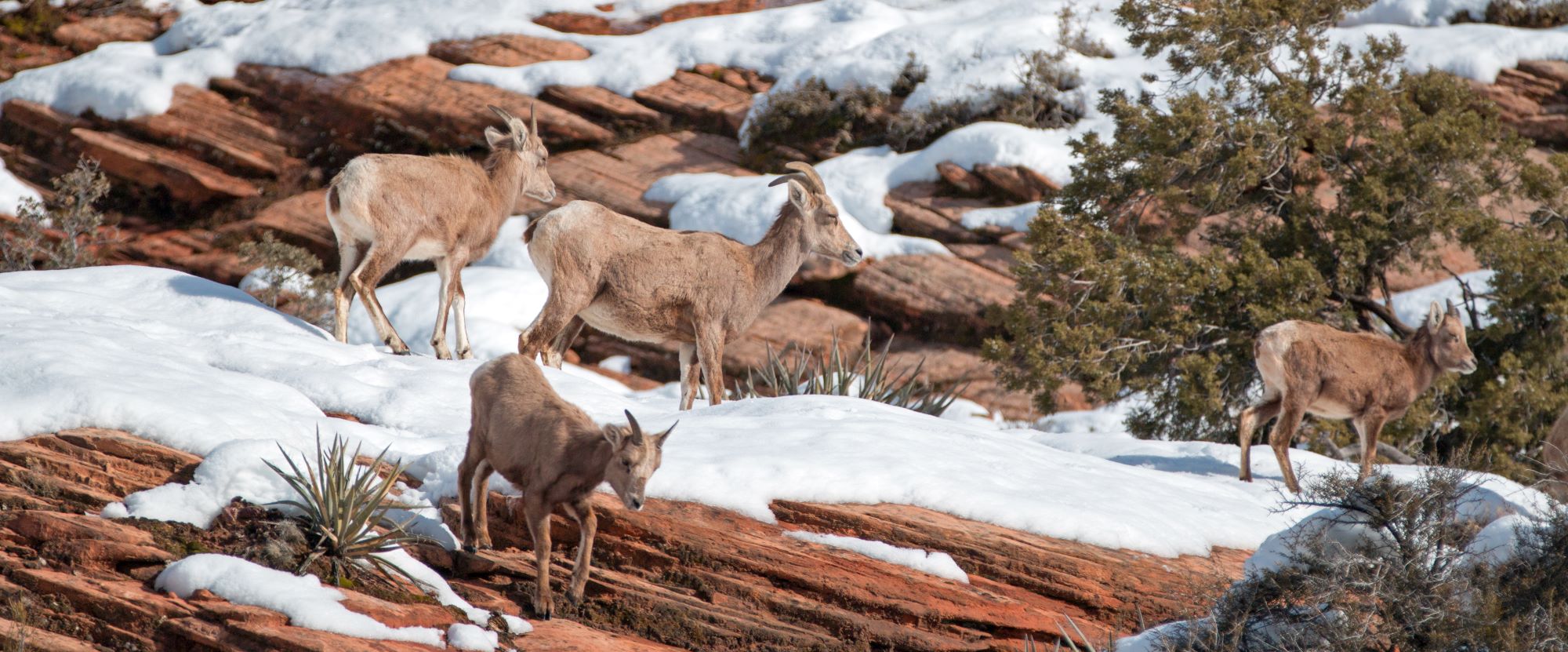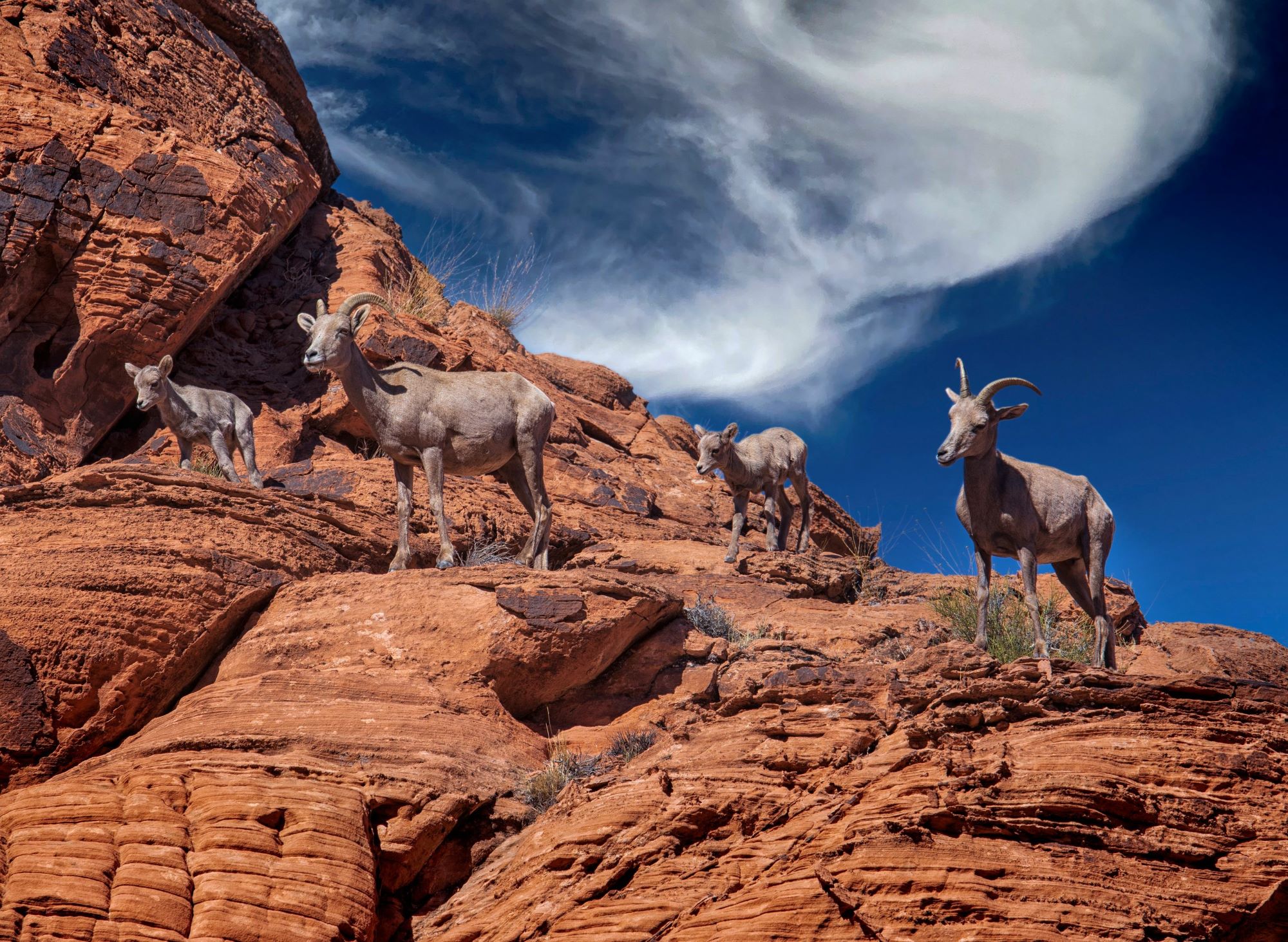
Desert Bighorn Sheep in Utah
Desert bighorn sheep, a distinct subspecies of North American bighorn sheep, are a resilient and iconic species in Utah's arid and semi-arid landscapes. Known scientifically as Ovis canadensis nelsoni, they are specially adapted to the harsh conditions of desert environments, such as those found in the southern and southeastern regions of Utah, including areas around the Canyonlands and Zion National Park.
Physically, desert bighorns are slightly smaller and lighter in color compared to their Rocky Mountain counterparts, with adaptations that suit their desert habitat. They have a lighter, more tan-colored coat, which reflects sunlight and helps them blend into the sandy and rocky terrain. Their bodies are adept at conserving water and tolerating higher body temperatures, essential traits for surviving in arid conditions with extreme temperature fluctuations.

One of the most striking features of desert bighorns is their magnificent horns. Rams have large, curved horns that continue to grow throughout their lives, while ewes have shorter, less curved horns. These horns are not only a defining characteristic but also play a vital role in mating rituals and dominance displays. The rams engage in head-butting contests, similar to Rocky Mountain bighorns, to establish hierarchy and breeding rights.
Desert bighorns are highly skilled climbers and agile on the rugged, steep terrain of cliffs and rocky outcrops, which they use to evade predators and access food. Their diet primarily consists of a variety of grasses, forbs, and shrubs, with a particular dependence on plants that are high in moisture content, helping them to minimize water intake.
Socially, desert bighorns exhibit similar behaviors to other bighorn sheep, with rams and ewes typically living in separate groups outside of the breeding season. The rams form bachelor groups, while the ewes, lambs, and yearlings gather in nursery herds. The breeding season, or rut, occurs in the fall, leading to dramatic head-butting battles among rams.
Conservation of desert bighorns in Utah has been a priority due to historical declines in their populations. These declines were primarily due to factors such as habitat loss, competition with domestic livestock, human encroachment, and diseases transmitted by domestic sheep. Through concerted conservation efforts, including habitat protection, reintroduction programs, and careful management, their populations have seen a gradual increase in certain areas.
However, desert bighorns continue to face challenges, especially from habitat fragmentation, human disturbance, and the ever-present threat of disease transmission. Conservation strategies involve ongoing habitat preservation, monitoring population health and dynamics, and maintaining a buffer between domestic animals and wild sheep populations.
In summary, desert bighorn sheep in Utah are a testament to the adaptability and resilience of wildlife in desert ecosystems. Their presence in Utah's southern landscapes is not only ecologically significant but also culturally and symbolically important, representing the rugged and wild spirit of the American Southwest. Ongoing conservation and management efforts are crucial to ensure the continued survival and flourishing of this remarkable subspecies in Utah's deserts.